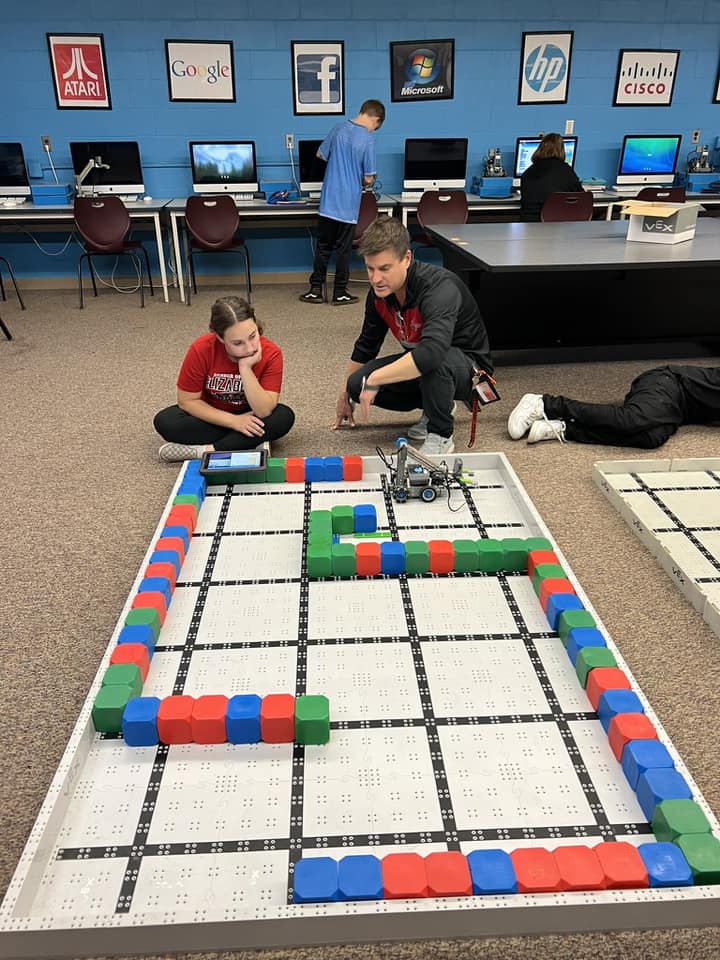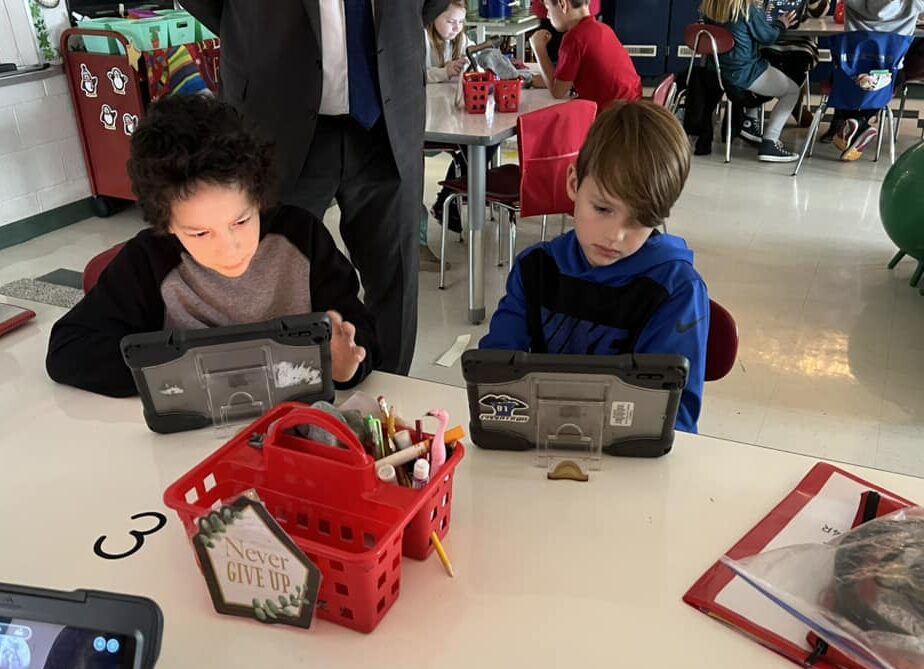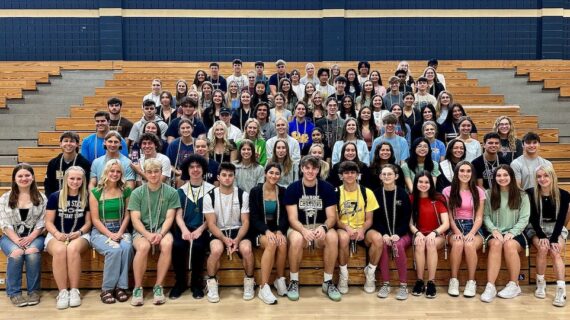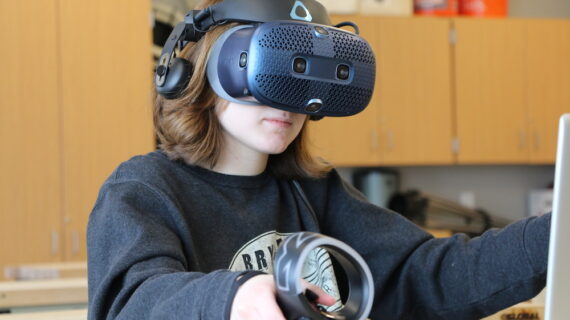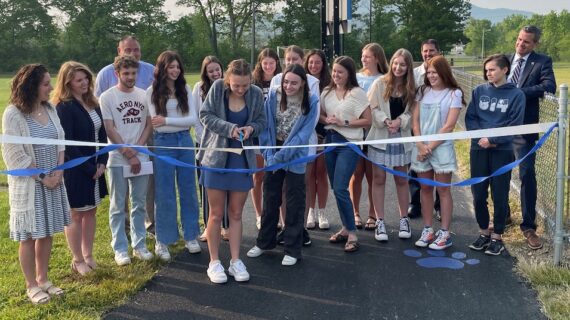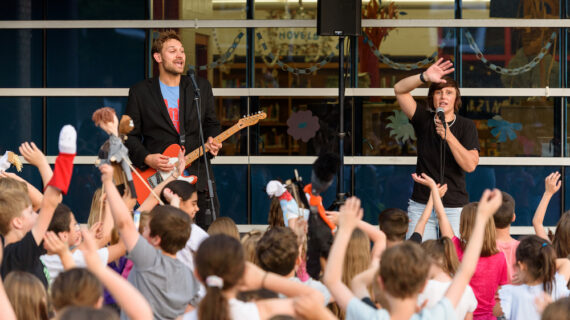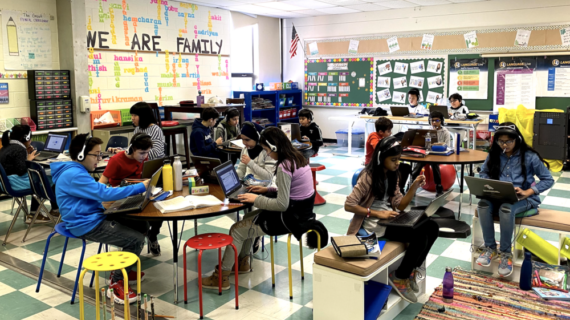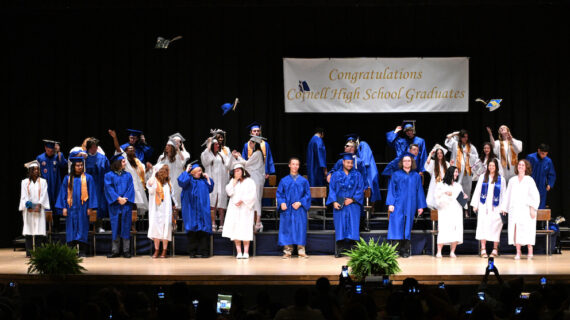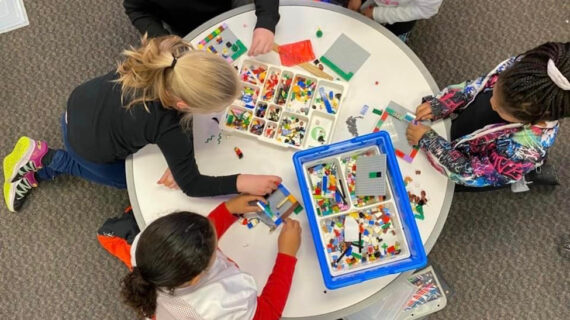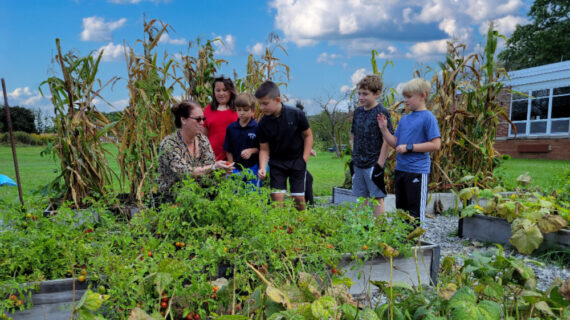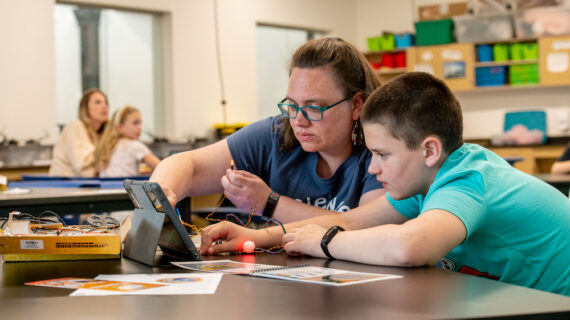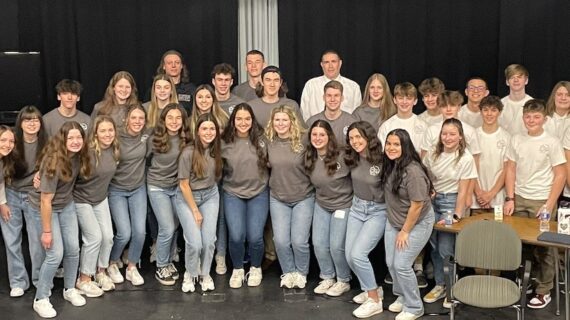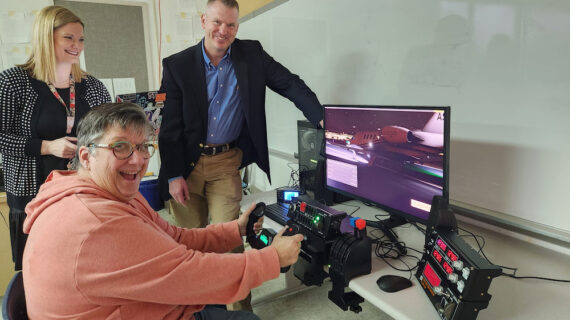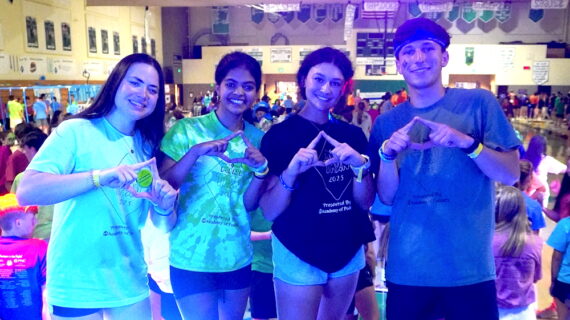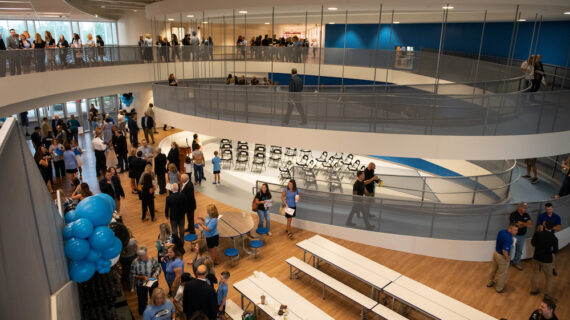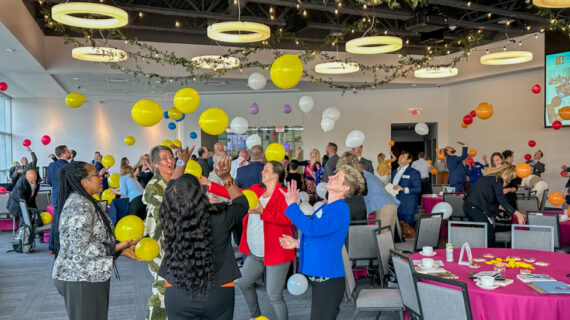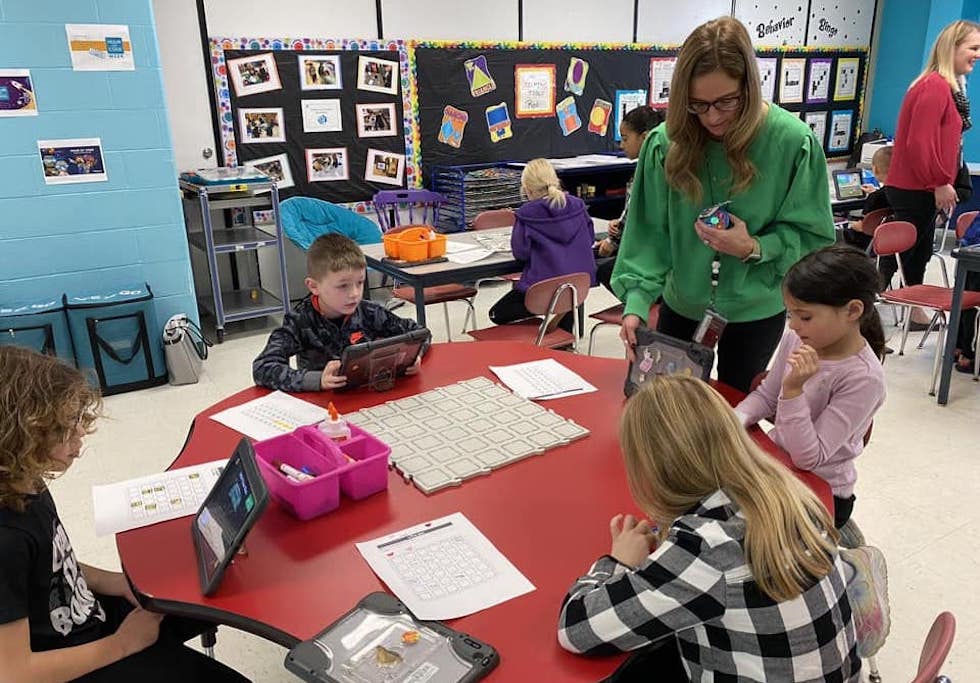
Personalized learning and personal connections are thriving at Elizabeth Forward
This story is one in a series created in collaboration with the AASA Learning 2025 Alliance to celebrate the work of groundbreaking school districts in the Pittsburgh region. Kidsburgh will share these stories throughout 2023.
In the summer of 2019, teachers at Elizabeth Forward School District got their first glimpse of a digital platform called Canvas. Nearly a decade earlier, the district had started a one-to-one iPad initiative and soon after began working with learning scientists at Carnegie Mellon University and a technology-focused charitable foundation called the Chan-Zuckerberg Initiative with a clear goal: to shift “personalized learning” from concept to reality.
That early work with digital learning systems had been promising, but inconsistent. So after much research, the district went all-in with Canvas. Teachers dove into training; by January 2020, they were evaluating their progress and getting help on remaining pain points.
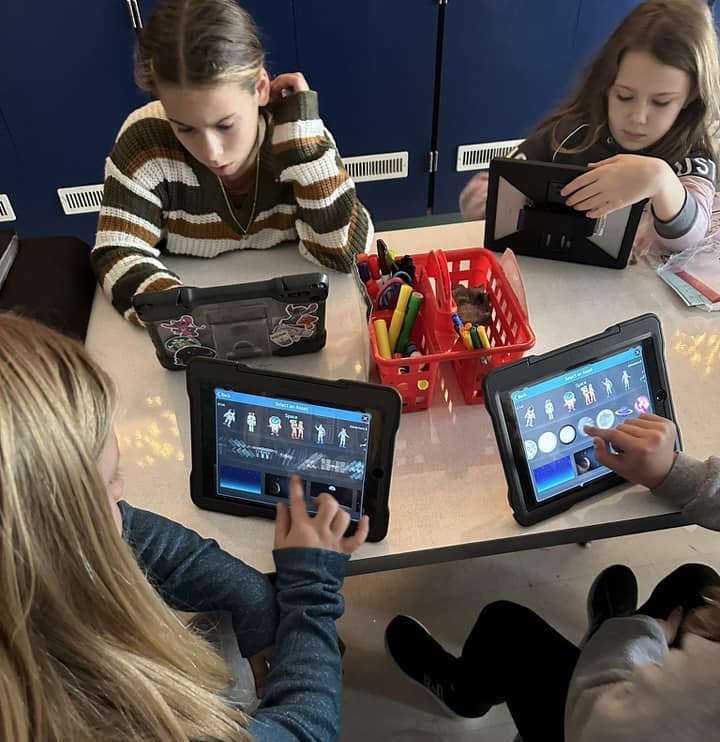
The plan was to use online learning in classrooms. But when the pandemic emerged, “we had this already built, and we had people trained on how to use it,” says district Superintendent Keith Konyk.
Elizabeth Forward was the rare district that closed for only a single day, then pivoted to online learning by the second day of lockdown.
“Essentially, all we did was flip the switch,” Konyk says. “Instead of your physical space being your primary classroom, this digital thing that was already there but had been secondary was now the primary space.”
Accolades, including a Digital Ecosystem of the Year award from the National Council on Digital Convergence, followed. Elizabeth Forward’s embrace of online learning had proved valuable during what seemed like the most dramatic test the school district would ever face.
Then, earlier this year, a different kind of tragedy struck: An early morning fire tore through a portion of the high school.
Relieved as district leaders were that no one was hurt, they were nonetheless left with a crisis. The high school building couldn’t be used, and there was no telling when it would be safe to return.
And just as they had two years earlier, Elizabeth Forward’s teachers pivoted.
After a single day without instruction, the district’s high schoolers were learning online once again. And beyond teaching, the school was using its online capacity to keep students fully connected during this jarring situation.
“Even in a remote learning environment, teachers did what they always do, using their positive relationships with students to connect and make learning fun and engaging,” says Michael Routh, the high school’s principal.
CONSISTENCY AND COMMITMENT TO TRAINING
The district’s focus on staff training was one key to online learning success. Teachers couldn’t just be familiar with Canvas. They needed to be fluent in online teaching tools and techniques. So professional development training is now done through Canvas, with the district creating modules based on teacher needs.
“Our administrators model technology integration into professional learning by providing our teachers with multiple ways to learn through hands-on experience, digital resources, and peer interactions,” says Victoria Lojek, Elizabeth Forward’s director of digital teaching and learning. “Our teachers have differentiated learning needs, just like our students.”
Today, Elizabeth Forward shares knowledge about personalized learning as a member of the Western Pennsylvania Learning 2025 Alliance. This group of school districts works with one another and with partners across the country to powerfully prepare students for the future. Led by AASA, The School Superintendents Association, and by local superintendents including Konyk, the Alliance convenes for workshops, networking, and professional development.
Last year, AASA designated Elizabeth Forward as one of its first 13 Lighthouse Schools, a group of districts breaking new ground and sharing their knowledge with others.
Sharing progress – and sharing the inevitable challenges that come with innovating – has been a habit at Elizabeth Forward for more than a decade. Early in the district’s journey, Konyk says, folks from other school districts would ask to see the groundbreaking work they were hearing about at Elizabeth Forward. The district would enthusiastically open its doors, with one caveat: This is all just beginning, they would tell visitors. It can’t be scaled to every classroom on day one.
“We used to joke that we’d do tours and you would have to say, ‘Okay, go in that classroom and go in that classroom. Don’t go in those two classrooms over there, but you can go in the next one,” Konyk says.
Just a few months prior to the fire, it was clear how far this district had come when Konyk and his team put their district’s personalized learning on display during an “Apple Tour.”
All buildings in the Elizabeth Forward School District have earned the distinction of “Apple Distinguished School,” a designation that comes from the computer company. When a group from other Apple Distinguished Schools visited last fall, Elizabeth Forward hosted a series of presentations in a half-dozen middle school and elementary school classrooms.
But rather than fill the daylong visit with only scripted sessions, they completed their presentations and then let the group know: You can roam freely around our buildings to see personalized learning in action.
That consistency took years to build, but it was always the goal, Konyk says. And it matters, because this is how true equity — just like effective personalized learning — becomes a reality rather than just a dream.
“We’ve worked very hard to make sure that every single kid, regardless of what class they’re in, has the same opportunities because they have teachers in front of them who are all supported and trained very similarly,” he says. “So that those teachers can provide really great instruction to every one of the kids in our district.”
Want to download this story? Click here for a PDF.
